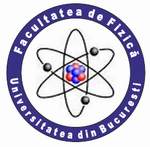| |
 |
UNIVERSITY OF BUCHAREST
FACULTY OF PHYSICS Guest
2025-10-05 22:42 |
 |
|
|
|
Conference: Bucharest University Faculty of Physics 2025 Meeting
Section: Atmosphere and Earth Science; Environment Protection
Title:
How Cloud Seeding Affects Hailstorm: A Radar Study from Romania (2017–2022)
Authors:
Vasilică ISTRATE(1,2), Serghei EREMEICO(1), Lucian Ionuț LAZĂR(1,2), Dorin PODIUC(1), Dragoș Andrei SÎRBU(1), Eduard POPESCU(1), Emil SÎRBU(1), Doru-Dorian POPESCU(1)
Affiliation:
1) Intervenții Active în Atmosfera SA
2) Alexandru Ioan Cuza University, Iași, Faculty of Geography and Geology
E-mail
vasile.istrate@iaa.eu
Keywords:
Cloud seeding, Hail suppression, Statistical inference, Romania
Abstract:
Hailstorms represent a recurring hazard to agriculture and infrastructure in Romania, prompting the adoption of a national hail suppression program based on silver iodide (AgI) cloud seeding. This radar-based study investigates the impact of seeding on hailstorm characteristics by synthesizing results from two independent analyses conducted between 2017 and 2022.
The first analysis compared radar-derived parameters from 20 seeded and 20 unseeded hailstorms using data from six meteorological radars across Romania, Moldova, and Bulgaria. Key indicators—including maximum reflectivity (Zmax), storm echo top height (H_top), the height of the 45 dBZ echo above the melting level (dH45), and vertically integrated liquid (VIL)—were examined. Statistical evaluation using the Mann-Whitney U test revealed that unseeded storms generally exhibited higher VIL, dH45, and storm volume with reflectivity above 35 dBZ (dV35), indicative of more intense hail development. Seeded storms showed reduced values for these parameters, particularly in the post-seeding phase, suggesting a suppressive effect on hail growth.
The second analysis focused on 51 severe hailstorms that underwent seeding during the same period. A storm-tracking algorithm examined radar signatures across three stages: before, during, and after seeding. Results indicated a transient intensification of convective activity during seeding, followed by a marked decrease in Zmax, H_top, and VIL—typically by 10–15%—after seeding ceased. This decline supports the hypothesis of precipitation acceleration and a subsequent reduction in hailstone size. Furthermore, spatial analysis of hail kinetic energy revealed diminished values in seeded regions relative to nearby unseeded areas.
Together, these radar-based studies offer converging evidence that cloud seeding modifies storm microphysics, with an initial enhancement of convection followed by a measurable reduction in hail formation. The findings underscore the potential effectiveness of Romania’s hail suppression program and point to the need for continued evaluation and optimization of seeding strategies across varying meteorological scenarios.
Acknowledgement:
We are grateful to the Romanian National Hail Suppression and Rain
Enhancement Authority and National Meteorological Administration for
providing us with access to cloud seeding information and radar data.
We extend our gratitude to all our colleagues, thanks to Ms.
Ala Panaite, Ms. Ana Jigău, and Mr. Miron Moldovan, for carrying out
the seeding operations diligently and thoroughly, enabling the systematic
analysis of high-quality data for scientific research. Special thanks to
Dr. Marius Radulescu for providing valuable information regarding the
operational mechanisms of the anti-hail rocket.
|
|
|
|